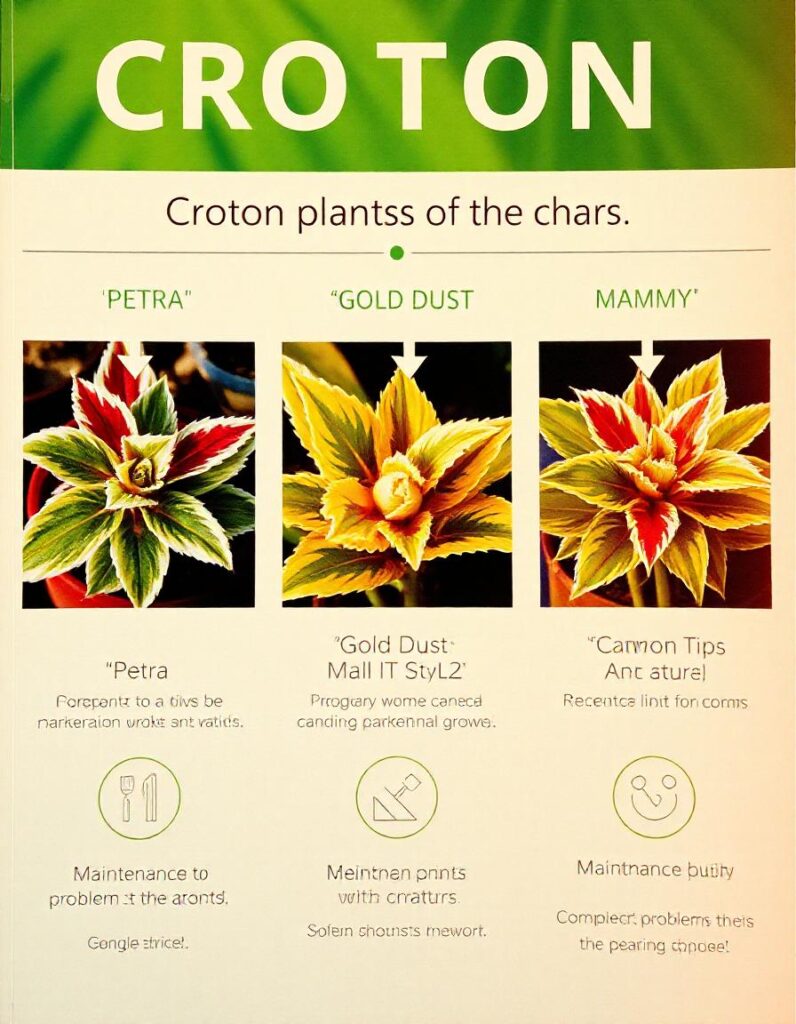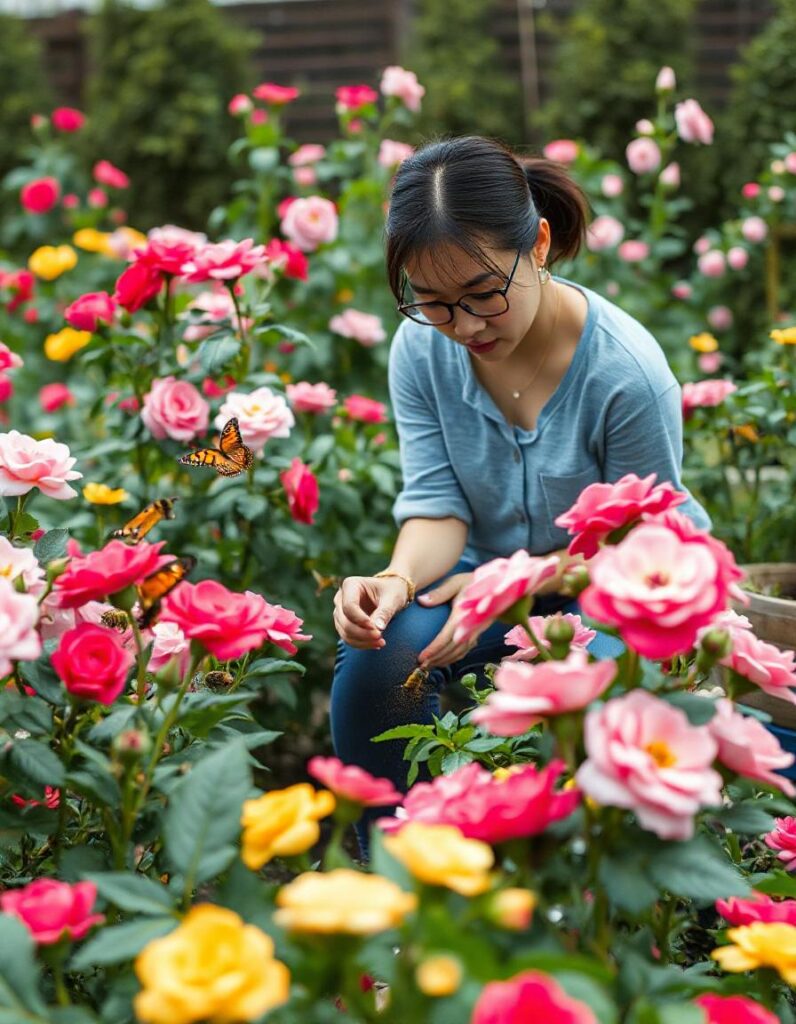Croton Plant: A Comprehensive Guide
The Croton plant (Codiaeum variegatum) is a popular tropical plant known for its stunning and colorful foliage. Native to Southeast Asia and the Pacific Islands, the Croton plant has become a favorite among gardeners and houseplant enthusiasts due to its wide variety of leaf shapes, colors, and patterns. Its vibrant leaves, ranging from deep green to bright yellow, orange, red, and purple, make it an attractive addition to indoor and outdoor gardens.
Table of Contents

Botanical Classification
- Scientific Name: Codiaeum variegatum
- Family: Euphorbiaceae
- Common Names: Croton, Garden Croton, Variegated Croton
- Origin: Southeast Asia, Pacific Islands
Characteristics
- Leaf Shape and Color: One of the most striking features of the Croton plant is its foliage. The leaves can be large or small, oval or lobed, and exhibit a wide range of colors. Some varieties feature leaves with a mix of red, yellow, green, and purple hues, often with unique patterns such as spots or stripes.
- Size: Croton plants can grow anywhere from 3 to 10 feet tall when planted outdoors in ideal conditions. As indoor plants, they are typically smaller, reaching heights of 2 to 4 feet.
- Flowers: Though Croton plants do produce flowers, they are relatively inconspicuous compared to the vibrant leaves. The flowers are small, star-shaped, and white, growing in clusters.
Varieties
There are several varieties of Croton plants, each with distinct leaf shapes and color patterns. Some popular varieties include:
- Petra Croton: Known for its large, oval leaves with bright green, red, yellow, and orange hues.
- Gold Dust Croton: Features dark green leaves speckled with golden yellow spots, resembling splashes of paint.
- Mammy Croton: Recognized by its twisted, curling leaves with a mixture of red, orange, yellow, and green.
- Oakleaf Croton: Has large, oak-shaped leaves with a mix of deep green, red, and yellow.
Care and Maintenance
Croton plants are relatively easy to care for, but they do have specific needs that must be met for them to thrive. Here’s a guide on how to properly care for your Croton plant:
- Light Requirements: Croton plants thrive in bright, indirect sunlight. They can tolerate some direct sunlight, which helps enhance the vibrant colors of the leaves. However, too much direct sunlight can scorch the leaves, while insufficient light may cause the colors to fade.
- Watering: Crotons prefer consistently moist soil but should never sit in waterlogged conditions. Water the plant when the top inch of soil feels dry, ensuring that the water drains well. Overwatering or underwatering can lead to leaf drop.
- Temperature and Humidity: Croton plants prefer warm, tropical conditions with temperatures between 60°F and 85°F (15°C – 29°C). They are sensitive to cold drafts, so avoid placing them near windows or doors that might expose them to cold air. High humidity levels are ideal, so misting the plant regularly or placing it near a humidifier can help it thrive.
- Soil: A well-draining potting mix is essential for Croton plants. A mix of peat-based soil with perlite or sand works well. Ensure that the pot has drainage holes to prevent water from accumulating at the bottom.
- Fertilizing: During the growing season (spring and summer), feed your Croton plant with a balanced, water-soluble fertilizer every 4 to 6 weeks. Reduce feeding in the fall and winter when the plant’s growth slows down.
- Pruning: Regular pruning helps maintain the shape and size of your Croton plant. Remove dead or damaged leaves to encourage new growth and prevent disease.
- Repotting: Repot your Croton plant every 2-3 years or when it becomes root-bound. Choose a pot that is one size larger and ensure it has adequate drainage.
Propagation
Croton plants can be propagated through stem cuttings, which is a relatively simple process:
- Take a 4-6 inch stem cutting from a healthy plant, ensuring that it has at least 3-4 leaves.
- Dip the cut end into rooting hormone to encourage root development.
- Plant the cutting in a pot with moist, well-draining soil.
- Place the pot in a warm, humid environment with bright, indirect light.
- Keep the soil consistently moist until new roots develop, usually within a few weeks.
Common Problems and Solutions
- Leaf Drop: This is one of the most common issues with Croton plants and can be caused by several factors, including changes in light, temperature, or watering habits. Ensure that the plant is in a stable environment with consistent care to prevent leaf drop.
- Pests: Croton plants are susceptible to common pests such as spider mites, mealybugs, and scale insects. Regularly inspect the plant for signs of infestation and treat it with insecticidal soap or neem oil if necessary.
- Root Rot: Overwatering and poor drainage can lead to root rot, which is a serious issue for Croton plants. Ensure that the soil is well-draining, and allow the top inch of soil to dry out between waterings.
Toxicity
Croton plants are considered toxic to both humans and pets if ingested. The sap can cause skin irritation, so it’s important to wear gloves when handling the plant or pruning. Keep the plant out of reach of children and pets to avoid any accidental ingestion.
Conclusion
The Croton plant is a vibrant and eye-catching addition to any home or garden, with its dazzling array of colors and patterns. While it requires some specific care, the rewards of growing a healthy Croton plant are well worth the effort. Whether you’re looking to brighten up a room or add some tropical flair to your garden, the Croton plant is sure to make a bold statement.
